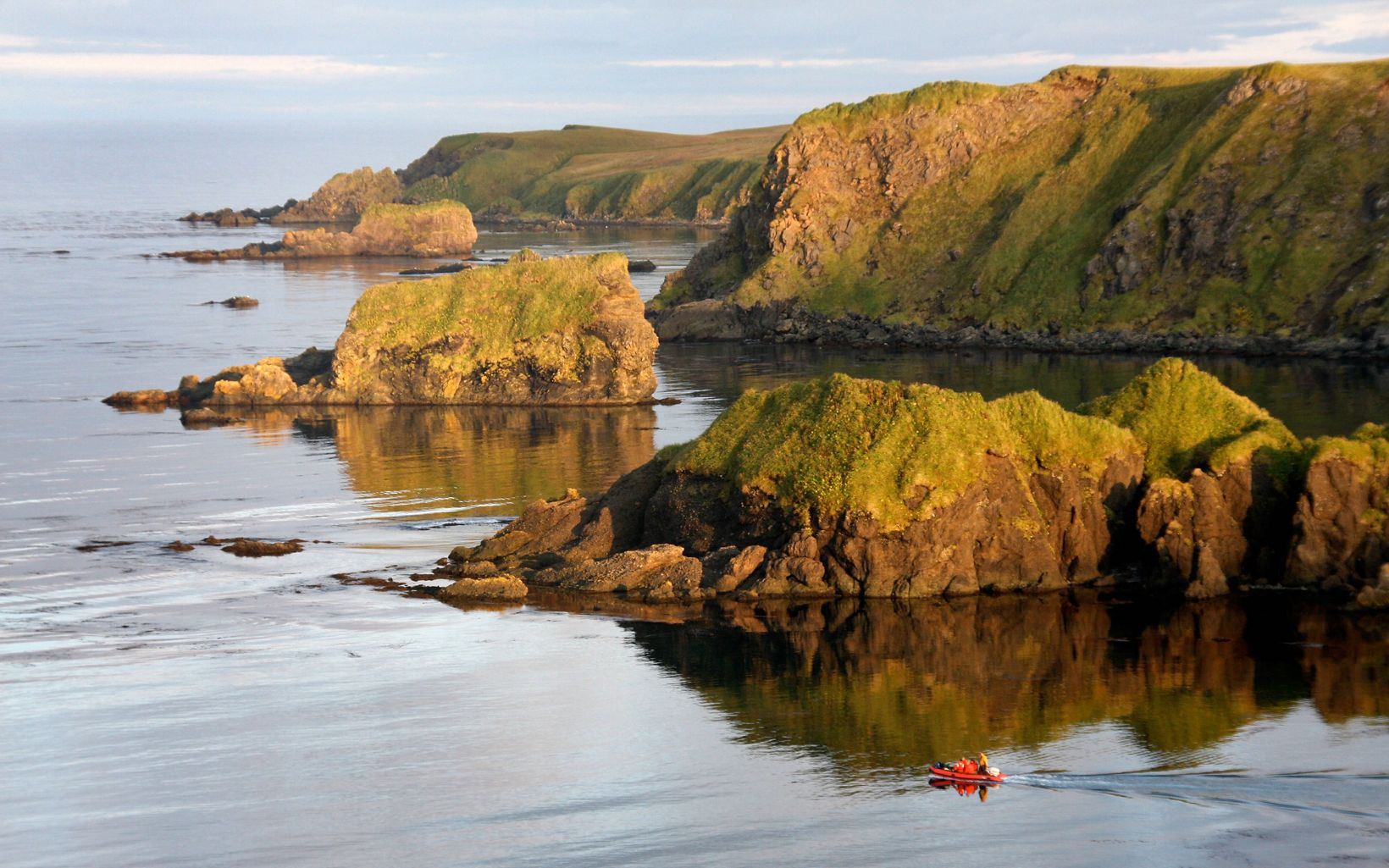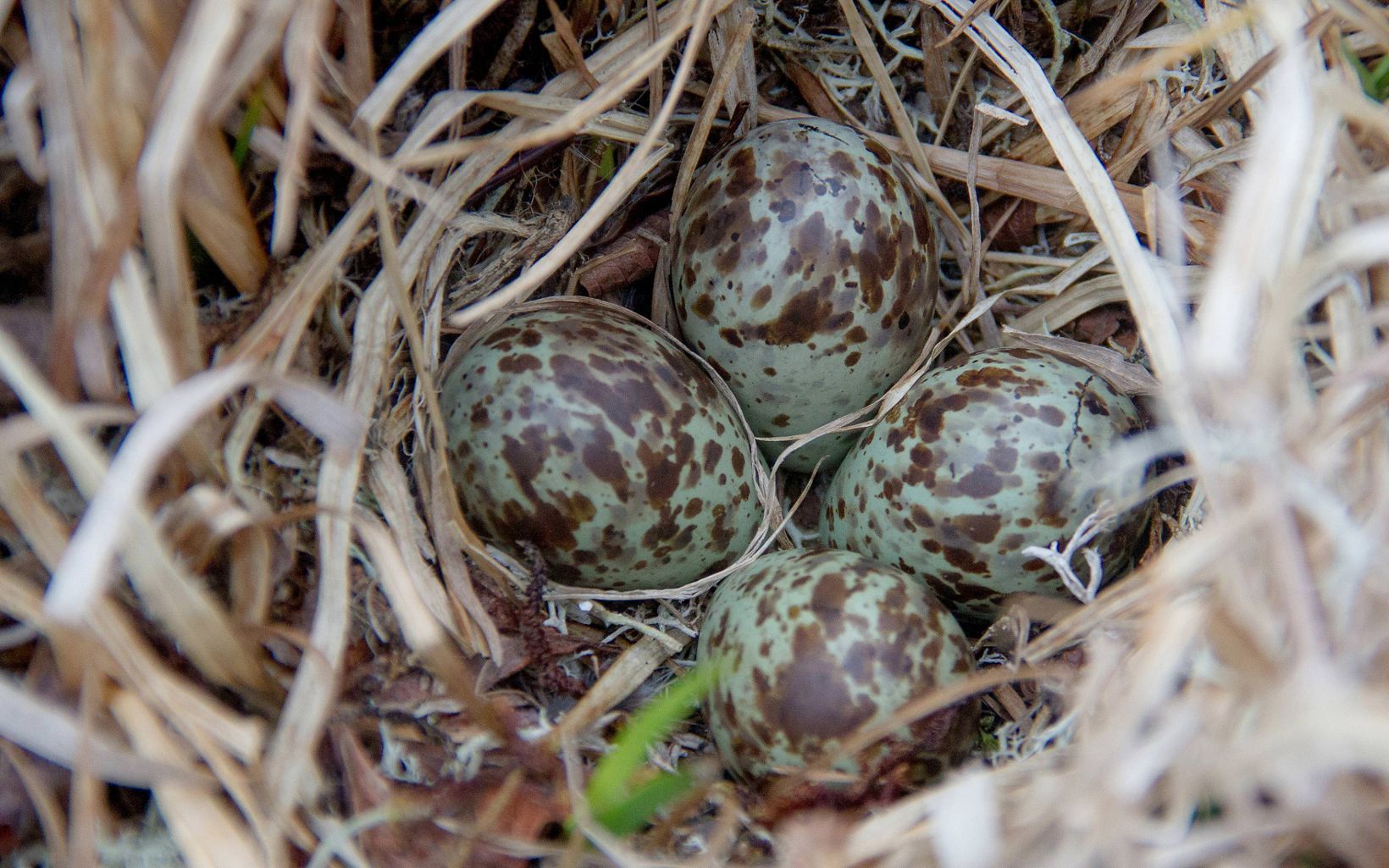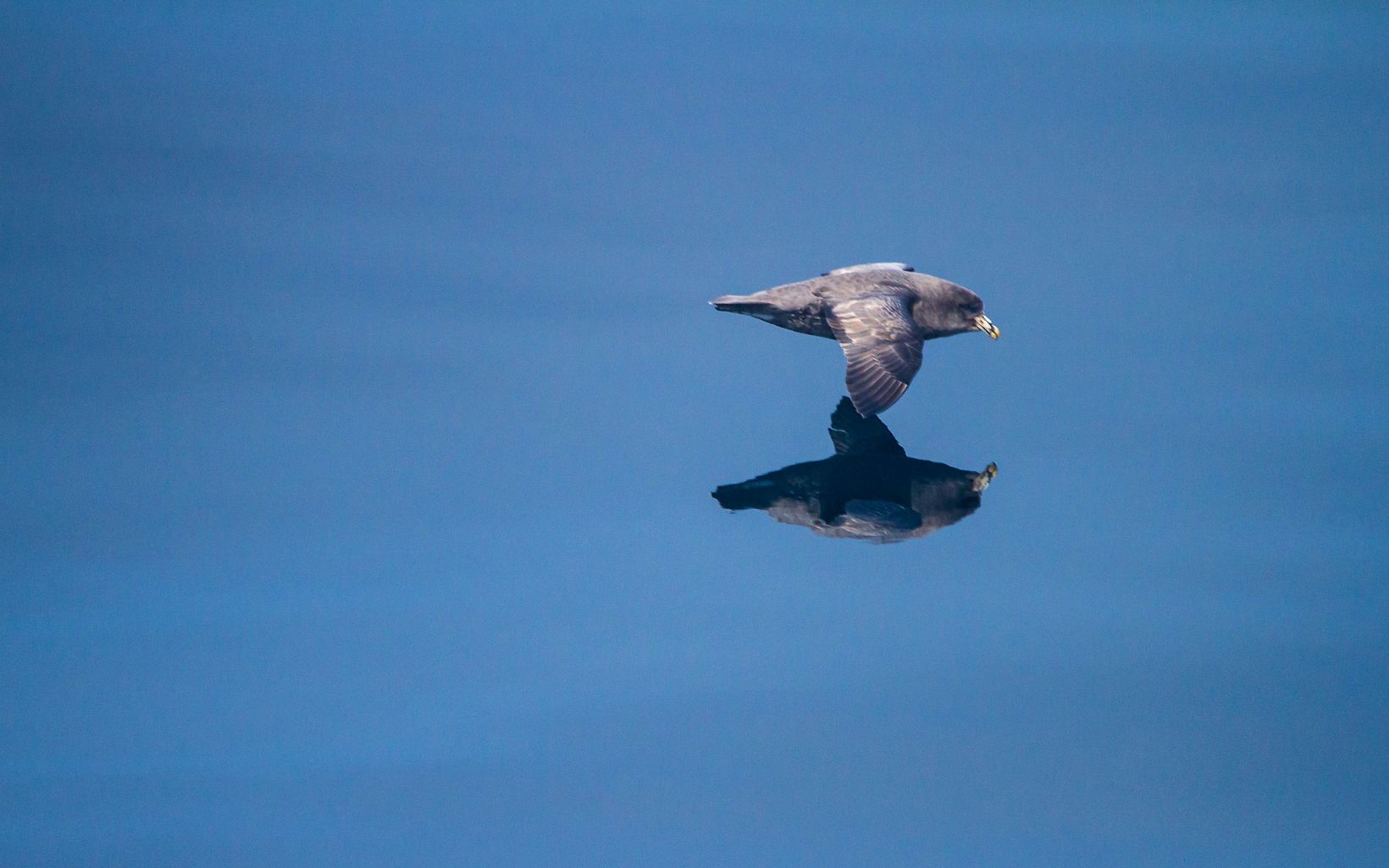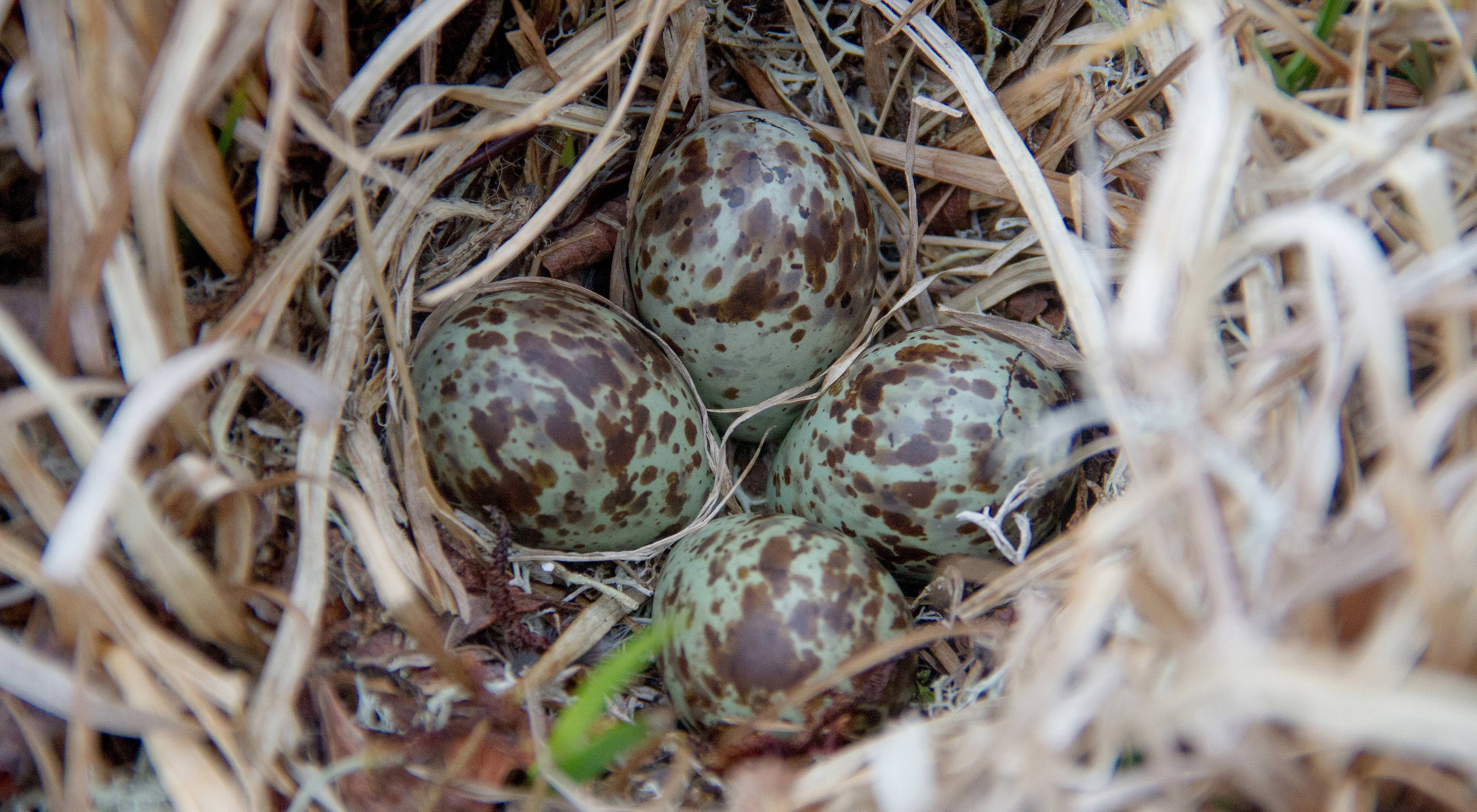New Seabird Life at Hawadax Island Alaska
After removing invasive rats, nesting seabirds returned to the Aleutian Islands–and so did the Unangan name.
Alaska's Aleutian Islands are home to tens of millions of seabirds, making this far-flung archipelago one of North America's 10 birding hotspots — and the best seabird habitat in North America.
But something went awry on the what was long known as Rat Island, a 10-square-mile dot in the Aleutians. Invasive rats pillaged seabird nests here since they first spilled from a 1780s shipwreck that — except for the stowaway rats — left no survivors.
So in September 2008, The Nature Conservancy and its partners set out across the Bering Sea to eradicate the rats once and for all — and embark on the most ambitious island habitat restoration project ever undertaken in the Northern Hemisphere, involving helicopters and a boat ride into the teeth of the North Pacific's worst weather.
And the rats are now gone (more details below). Monitoring trips since 2008 have shown native seabird species are benefiting in the absence of rats, including species like the Leach's storm-petrel, a nocturnal seabird otherwise at very high risk of predation by rats because of their small size and conspicuous calling activity to attract mates.
Hawadax Island
In 2012, the Unangan name of the island was officially restored after a campaign led by Indigenous people with deep cultural ties to this remote region. The U.S. Board on Geographic Names made the name change official after a petition from the Aleutian Pribilof Islands Association to restore the Native name “Hawadax” to the island.
Hawadax is an Unangan word meaning “those two over there,” a name that quite accurately describes two knolls that dominate the island’s topography. Although it is now uninhabited, the nine-mile-long island was traditionally used by the Unangas/Unangan people for millennia. This name is further supported by attestations recorded in 1840 and again in 1950-1952. The name is still used by speakers in the native village of Atka today.
In a petition submitted to the U.S. Board on Geographic Names, which formally approved the name change request by Karen Pletnikoff of the Aleutian Pribilof Islands Association, she wrote, “Since the island is now rat-free, an appropriate Unangas/Unangan name should be restored to reflect both the true history of the island and celebrate the success of removing invasive species from essential habitat. Resources show that the most historic Unangas/Unangan name for the island was ‘Hawadax.'”
Missing: Puffins, Auklets and Murres
Though a cacophony of seabird cries fills the skies along many craggy coastlines in the Aleutian Islands, the cliffs of Hawadax Island were strangely quiet prior to the habitat restoration.
This unnatural absence of puffins and auklets in this otherwise healthy habitat in the Alaska Maritime National Wildlife Refuge was caused by the invasive Norway rat, a formidable predator for these birds.
The populations of the Norway rats ran amok, feasting on eggs and young chicks during the birds' brief nesting season.
In the Aleutians, colonies of seabirds such as puffins and auklets are like the biological engine that keep these rich systems humming. An Aleutian Island without seabirds is missing something vital.
The Island wasn't always bird-free, though, according to archeologists and biologists.
The Aleutians are Indigenous territory, and in the remnants of an Native village — dating from 800-1400 and 1780-1800 — a forgotten midden where lush grass grows today contains the bones of birds no longer found on the island. Other archeological excavations reveal that the bird decline coincided with the arrival of the rats.
"At the point where rats were introduced, there seems to be a pretty clear and sudden drop in the number of bird families and species and individuals," says U.S. Fish and Wildlife Service archeologist Debbie Corbett.
Rough Weather, Helicopters and Bait
So bringing back the seabirds meant ridding the island of its rats. And the 2008 voyage to the island did just that.
TNC partner Island Conservation led its crew of 12 in a seaworthy 158-foot fishing vessel that had time and again proven itself in the notorious storms of the North Pacific.
The weather on this trip was trademark Bering Sea: Stormy 12-foot seas sent waves of icy water splashing over the ship's stern. Gales reached 40 knots.
"On the first day, we didn't get off the ship because the swells were too big," says one crew member.
The boat and its eager crew met the rest of the restoration team on the island. This included two helicopters equipped with highly accurate GPS-guided navigation systems. The pair hop-scotched down the Aleutian chain until they reached distant Rat Island, as it was then known. Then, over the next ten days, the pilots traveled along a digital grid over the entire island, distributing rat bait laced with small amounts of rodenticide. The survival of a single rat jeopardizes the seabirds' safe return.
The helicopter campaign was a scaled-up version tested on a small set of Aleutian islands in 2006. The island is the planet's second-largest island ever restored for native species using these aerial eradication techniques.
A Global Model
Around the world, introduced non-native species such as rats are a leading cause of extinctions in island communities.
The restoration of Hawadax Island is one example of new global efforts to eradicate invasive species in otherwise healthy island ecosystems. Invasive rats have been introduced to about 90 percent of the world’s islands and are responsible for 40 percent to 60 percent of all recorded island bird and reptile extinctions.
This is a turning point for seabirds in the Aleutians. Introduced predators are the most critical threat to seabirds here and there is no better way to ensure their habitat remains healthy.
Alaska's Hawadax Island






